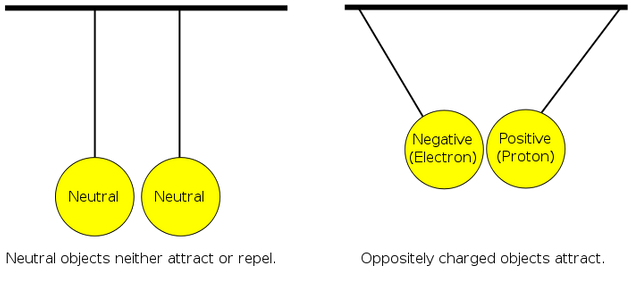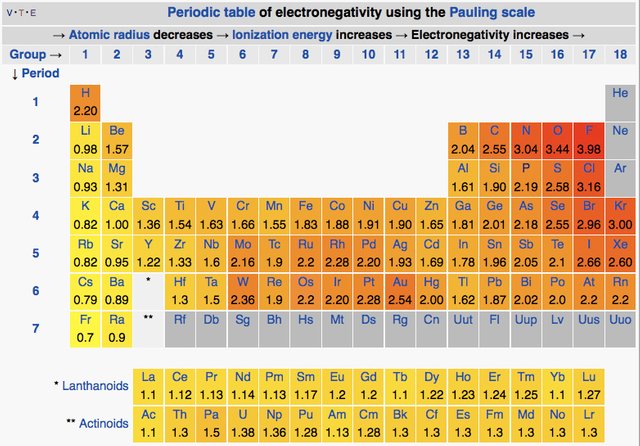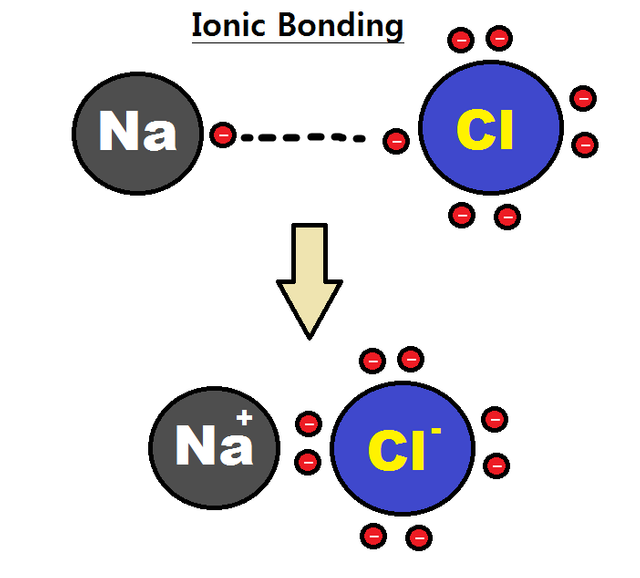Chemical phenomena: Electronegativity
Chemical phenomena: Electronegativity
Public Domain
Hello steemians, with today's post I would like to start a small series where I will explain some of the most interesting chemical phenomena. In this particular post, I will refer to one of the most interesting, electronegativity.
Electronegativity; is basically the scale of the force of attraction that an atom makes on the electrons of another atom.

Source
CC BY-SA 3.0
Another of the key definitions of electronegativity is that it is fundamentally a chemical property that evaluates the ability of an atom to capture electrons, or electron density when forms form covalent bonds in the molecules of materials.

Source
CC BY-SA 3.0
Periodic differentiation.
Since electronegativity is a fundamental characteristic of the representative elements of the periodic table, it is important to say that the relation of values of the elements in the said table increases from left to right.

Source
CC BY-SA 3.0
It should be noted that the different values of electronegativities of the transition elements are not so usual. In general, the ionization energies and the electronegativities are decreasing for the elements of the lower zone of the periodic table in comparison to the elements of the upper part of the table.
How does electronegativity affect the union of atoms?
When the value of electronegativity between atoms that want to be linked is the same, apolar bonds will form. While the greater the difference in electronegativity between two atoms, the higher the electron density of the molecular orbital will be and a polar bond will form.
It should be noted that when the values of electronegativities are quite high, there will be a complete transfer of electrons, giving rise to an ionic species.
The metals, however, having a relatively low electronegativity usually deliver their electrons to generate positive ions, while non-metals have to form negative ions because their electronegativity is lower.
Types of bonds.
- In the ionic bond model, the atom that confers an electron or more becomes a cation while the absorber transforms it into anion. The union persists because the ions attract.

Source
CC BY-SA 3.0
- In the covalent bond model, the electrons are shared by the two atoms that are to be bonded. Making the bond continue because the electrons are located between both nucleus and this prevents the repulsion between them.

Source
CC BY-SA 3.0
- Finally, in the metallic bond model, the electrons are transited with frees between ions (+). Due to this phenomenon, the ability of metals to conduct electrical current is originated.

Source
Author: TheRealPeper
Pauling scale.
Pauling defined it, as the ability of an atom in a molecule to capture electrons.
Their values have been determined on an arbitrary scale, called the Pauling scale, whose highest value is 4, which is the value assigned to fluorine, the most electronegative element. The least electronegative element, cesium, has an electronegativity of 0.7
The electronegativity of an atom is fundamentally conditioned by two magnitudes:
- Atomic mass.
- Average distance of the valence electrons with respect to the atomic nucleus.
Electronegativity cannot be measured directly, such as ionization energy, but can be determined indirectly by calculating other atomic or molecular properties. That is why they have proposed different ways for their determination and although there are small variations between the results all methods show the same periodic trend between the elements.
It is interesting to note that electronegativity is not strictly an atomic property, because it is represented in an atom within a molecule and, therefore, can vary slightly when the "environment" varies.
Calculation of electronegativity.
Knowing the energy of the bonds A-A and B-B, parameter D can be calculated as follows:
This parameter gives an idea about the deviation that the A-B bond can have from a pure covalent link situation. The greater D, the greater the ion contribution to that bond, and in that sense the difference of electronegativity between both elements A and B increases.
Pauling's definition of electronegativity is given by the following expression:
The Pauling scale has some limitations, for example, they depend on the oxidation number of the element. However, this scale is very suitable for calculating link energies between elements of different electronegativity as well as for a qualitative visualization of the polarity of the links.
Another definition of electronegativity, was proposed by Robert Mulliken when determining that when an element has a high ionization energy, I, and a high electronic affinity, Ae, then it has a great tendency to take electrons rather than to lose them. Therefore, when that element is part of a chemical compound must be quite electronegative. On the contrary, when both the ionization energy, I, and the electronic affinity, Ae, of an element have low values, said element will have a marked tendency to lose electrons when it is part of a compound and, consequently, it will be classified as an electropositive element.
These investigations led Mulliken to formulate his own definition of electronegativity, known as electronegativity of Mulliken, cM, whose formulation was given by the sum of the ionization energy and the electron affinity of an atom:
Where it is established that, if the values of I and Ae are high then cM will also have a high value; On the contrary, if I and Ae are low then cM will have a small value. The electronegativity scales of Pauling and Mulliken can be related to each other by the following expression:
References.
- https://en.wikipedia.org/wiki/Electronegativity
- https://www.chemguide.co.uk/atoms/bonding/electroneg.html
- https://quizlet.com/107199051/63-periodic-trends-flash-cards/
- https://www.cliffsnotes.com/study-guides/chemistry/organic-chemistry-i/review-of-general-chemistry/covalent-bonding-and-electronegativity
- https://www.britannica.com/science/ionic-bond
- https://en.wikipedia.org/wiki/Electronegativity#Pauling_electronegativity
- http://www.chemteam.info/Bonding/Electroneg-Bond-Polarity.html
- http://www.newworldencyclopedia.org/entry/Electronegativity#The_Mulliken_scale
- Electronegativity and The Mulliken scale
SteemSTEM
SteemSTEM is a community-driven project that now runs on Steemit for more than a year. We seek to build a community of science lovers on Steemit and to promote well written/informative Science Technology Engineering and Mathematics (STEM) postings in order to make Steemit a place for fascinating STEM content.
So if you want to read more scientific articles of good quality, visit the hashtag #steemstem and scienceON.

Disclaimer:
[1] All the content exposed in this post is a compilation of different sources besides my knowledge in the subject.
[2] All the images used are correctly labeled for reuse.
Congratulations! This post has been upvoted from the communal account, @minnowsupport, by josalarcon2 from the Minnow Support Project. It's a witness project run by aggroed, ausbitbank, teamsteem, theprophet0, someguy123, neoxian, followbtcnews, and netuoso. The goal is to help Steemit grow by supporting Minnows. Please find us at the Peace, Abundance, and Liberty Network (PALnet) Discord Channel. It's a completely public and open space to all members of the Steemit community who voluntarily choose to be there.
If you would like to delegate to the Minnow Support Project you can do so by clicking on the following links: 50SP, 100SP, 250SP, 500SP, 1000SP, 5000SP.
Be sure to leave at least 50SP undelegated on your account.
Being A SteemStem Member
Good way to explain the electronegativity and its influences on the type of chemical bonds. Nice to read.
I'm glad that you like it